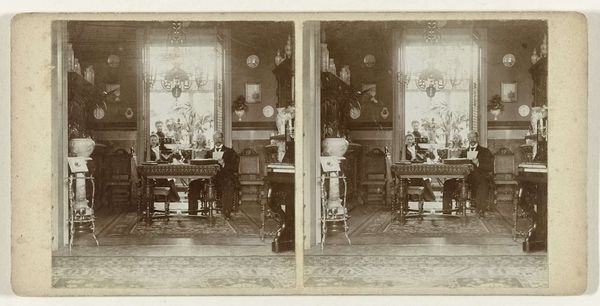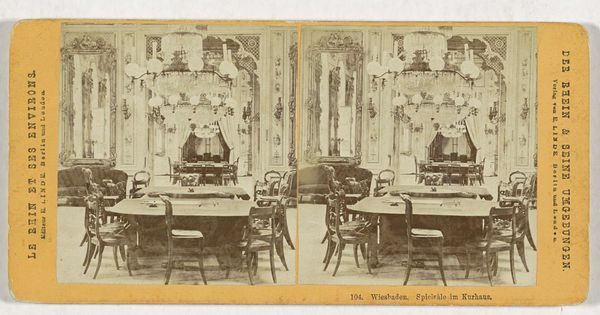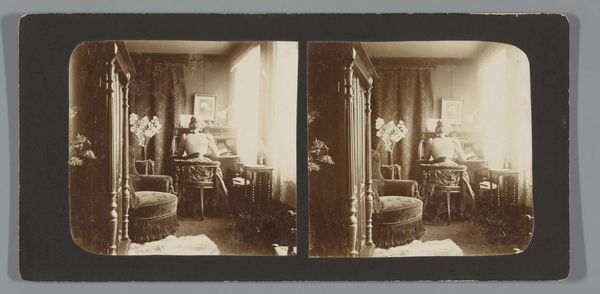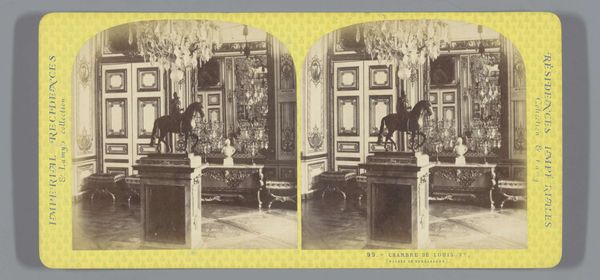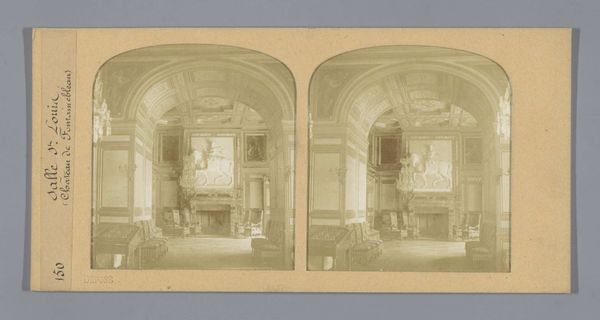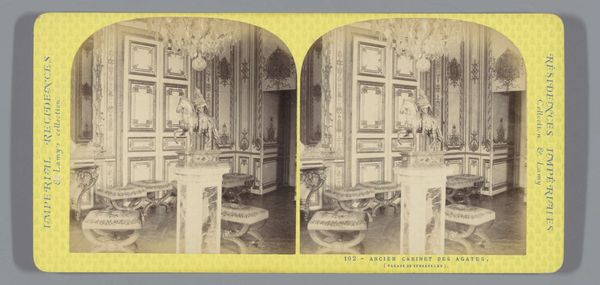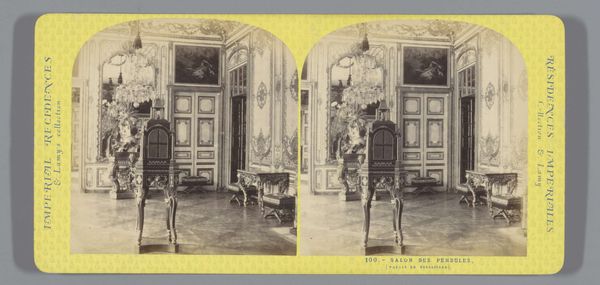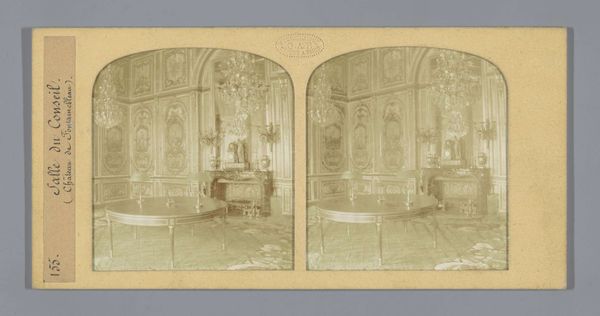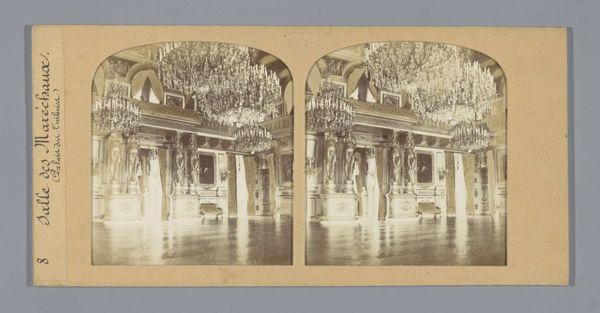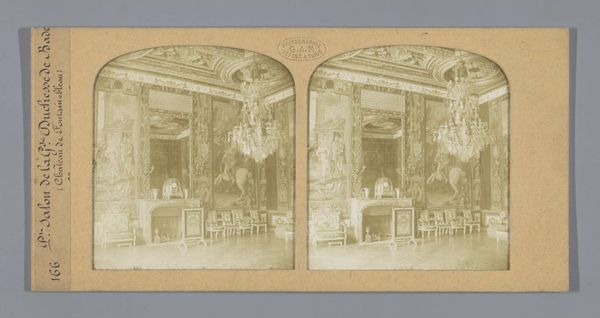
photography, albumen-print
#
portrait
#
photorealism
#
photography
#
genre-painting
#
albumen-print
#
realism
Dimensions: height 82 mm, width 169 mm
Copyright: Rijks Museum: Open Domain
Curator: This is Florent Grau's "Kaptafel in het kasteel van Saint-Cloud," taken in 1858, an albumen print offering a glimpse into the private space of royalty. Editor: Immediately, I'm struck by the opulent emptiness. The detailed ornamentation feels almost melancholic without the presence of people. Curator: Precisely. It's a genre-painting rendered through photography, playing with the concept of capturing a fleeting moment of bourgeois life, only here, it is a staged scene in the royal castle. Consider the socio-political context: photography in the mid-19th century was rapidly becoming a tool for documenting and disseminating images of power. Editor: And, thinking materially, the very process of albumen printing is interesting. It demanded a high level of technical skill, layering egg whites onto paper to create that smooth surface that allowed for such detail. We should be thinking about how access to these materials would have differed between photographers! The composition shows a certain degree of artistry as well in showcasing not only craftmanship of the pieces in the photo but of the technology used. Curator: The photograph’s purpose might be multifaceted. While seemingly intimate, this view was ultimately circulated. The Chateau itself holds significance as a site of political power, frequently used by French royalty and, at this point, the location would be filled with figures of historical importance. Editor: So it’s a representation of elite leisure, consumed, ironically, by a potentially broader audience thanks to the relative accessibility of photographs compared to painted portraits? Curator: Yes, Grau navigates this intersection deftly, presenting both access and carefully constructed distance. I wonder about the function of capturing such personal space without capturing a personal being inside. This photograph normalizes luxury but simultaneously maintains the unreachable fantasy for most. Editor: This has made me see the power structures operating, both literally and photographically. I won't look at photographs of interiors the same way again. Curator: Nor I. The details about production reveal so much about power dynamics in the mid-19th century. Thank you for your insight!
Comments
No comments
Be the first to comment and join the conversation on the ultimate creative platform.
